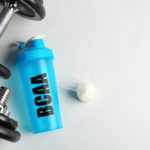What is a fat-burning zone?
Essentially, your fat-burning zone is the period during your training in which your body is burning more calories from fat than carbohydrates. If you are not aware, our heart rate and training intensity can determine how our bodies use our energy stores to burn calories. Having said that, let’s talk about the different types of energy systems and how they each use ATP, our cells energy and the key component to muscle activation. By understanding the energy systems, we can better understand how our bodies use energy during exercise. If the science behind everything does not interest you and you are just looking for the answer, feel free to skip to the “Why it makes no sense” section.
The first energy system we will discuss is the ATP-CP system, or commonly known as the phosphocreatine system or phosphagen system. Our muscles can only store a small amount of ATP at a time and when those ATP stores run out, our bodies begin to break down phosphocreatine in order to create more ATP, hence the name of the energy system (1). In an effort to not confuse you too much, this system supplies energy to our muscles for a short duration, about 10 seconds of maximum effort (anaerobics). Due to the short duration and intensity, this system relies almost entirely on current ATP and phosphocreatine stores, meaning you will not actively burn more calories from fat, as it does not give our bodies enough time to break down fat (1).
The second energy system we will discuss is the anaerobic lactic system, or commonly known as anaerobic glycolysis. This system takes over as the primary energy system during moderate-high intensity exercise, or exercise lasting about 10-60 seconds (1). As we discuss these systems, keep in mind that all three energy systems play a role in providing energy at any given point during exercise, but there is always a “main driver” that supplies most of the energy. Having said that, the anaerobic lactic system provides energy by breaking stored glycogen in the muscle cells and liver through a process called glycogenolysis (1). If you have ever heard someone talk about carbohydrate loading, they are talking about increasing their glycogen stores in an effort to increase their body’s stored energy source of glycogen, which can have a positive effect on performance. However, since this energy system primarily provides energy for 10-60 seconds in the absence of oxygen (anaerobic), most of the calories burned will be carbs in the form of that stored glycogen (1).
Still with me? Good. We have officially made it to our third, and final, energy system, which is where this “fat-burning zone” myth stems from. Our third energy system is the aerobic system, which means our bodies produce ATP (energy) in the presence of oxygen. The difference between the aerobic glycolysis system and the anaerobic glycolysis system is that the aerobic glycolysis system produces little to no lactic acid, which allows us to continue exercising for extended periods of time (longer than 60 seconds and up to 3 hours) (1). This system relies on breaking down glycogen, fat and protein for energy. Most of your low-moderate intensity exercise relies on the aerobic system for energy, and by improving your aerobic capacity, you can improve your body’s ability to use fat as an energy source (1). Due to the ability your body has to break down fat to use as ATP through this energy system, many people mistakenly believe, or tell you, exercise that correlates to this energy system will burn more fat than carbs. In theory, this “fat-burning zone” makes sense, but the science behind it proves it to be false, and I will explain why throughout this piece.
Why do businesses promote “fat-burning zones”
You tell me. Why not, right? It is a way to make more money by using buzzwords that make people think a product will help them lose more fat than other similar products, whether you are selling technologies, group fitness classes, online fitness programs, or anything health/wellness product. The reason businesses promote it and can get away with it is two main reasons.
The first reason businesses promote “fat-burning zones” is because very few people actually know the science behind it to tell you it is a bunch of crap. The second reason is that depending on how you phrase it, it can come across as being factual. For example, if I go on my Fitbit app right now and click on my daily exercise log, I will find my “zone minutes.” These zones are determined by using my max heart rate and are split up into three zones. These zones consist of my “peak zone,” which is exercise above 175 bpm, my “cardio zone,” which is between 143-174 bpm, and last, but definitely not least, my “fat burn zone,” which is 118-142 bpm and consists of my low-moderate intensity exercise. I will give Fitbit a little credit because they suggest you start out in the “fat burn zone” if you are new to exercise, and starting slow is always good. However, there are two problems with their description. The first being that they characterize this “fat burn zone” as moderate intensity exercise even though it is low-moderate intensity exercise using their max heart rate estimate of 220-age, which can vary a decent amount. Secondly, they are extremely vague in their wording, which is how businesses get away with promoting this “fat-burning zone.” The app states, “Here, you burn calories mostly from fat, but your total calorie burn rate is lower than from vigorous activities”. First of all, they should not have this labeled as a “fat burn zone.” However, they keep it, the description should say “Here, you burn a higher percentage of calories from fat compared to carbs, but exercising at higher intensities will yield a higher caloric burn in both fats and carbs.”
Why it makes no sense
Hopefully, you are beginning to understand the many reasons I have a problem with “fat-burning zones.” If you are still skeptical, let me spell it out for you. Yes, you will burn a higher percentage of calories from fat than carbs while exercising at low-moderate intensities. However, increasing the intensity will not only yield a higher caloric burn overall, but it will also burn more calories from fats and carbs. So if your goal is to burn as much fat as possible, why not train at a higher intensity, if you are able to do so?
The way we can determine how much energy is being provided by fats and carbs is by using what we call an RQ, or respiratory quotient. An RQ of 1.0 indicates 100% of our energy is coming from carbs, and an RQ of 0.7 indicates that fat is supplying 100% of the energy to our metabolism- anything in between 1.0 and 0.7 indicates a combination of carbs and fats (2). I really like the National Academy of Sports Medicine’s explanation as to why a “fat-burning zone” does not make sense because it is simple and directly relates to RQ values. Say you walk for 20 minutes at 3mph (low-intensity exercise), which equates to an RQ of 0.8. During this time and intensity, you use 67% energy from fats and 33% from carbs (2). In this 20 minute time frame, you expend a total of 64 calories from fat and 32 calories from carbs (2). Now, you double the intensity to 6mph and still only exercise for 20 minutes. The RQ for this intensity is now 0.86 and results in 54% of energy coming from carbs and 46% energy from fats (2). Some of you might be saying, “Well wait a minute, that is a lower percentage of fats. I thought you wanted the higher percent?” That same thought process is exactly what these businesses that use “fat-burning zones”as a marketing ploy are hoping you will have. Here is why the science does not add up. In this 20 minute exercise at 6mph, you will expend 104 calories from carbs and 90 calories from fat (2). So to sum it all up, you doubled the intensity, exercised for the same amount of time, and not only did you burn 26 more calories from fat but you also burned 72 more calories from carbs. Can you see the problem here?!
How to actually lose fat
To be honest, I am not really a fan of questions like this because they normally are followed up with, “How can I lose my lower belly fat?” or “How can I lose fat around my thighs?” The reason I am not a big fan of questions like that is because you cannot “spot” burn fat, meaning you cannot target a single area to burn fat. There are also many reasons why certain individuals may find it more difficult to lose fat in certain areas that are outside of our control, such as gender and hormones. For example, women carry more fat than men. Yes, I am sorry but it is true. In contrast, men tend to hold more weight and fat in their gut as opposed to women who hold more in their hips.
What I can give you are suggestions for maintaining a balanced, healthy diet, and some ways your nutrition and exercise can help lead to fat loss. First of all, to see substantial health benefits you want to exercise 150-300 minutes a week at a moderate-intensity or 75-150 minutes a week of vigorous-intensity, with 2 of those days being strength-based exercise (4). In regards to nutrition, some common guidelines are eating 45-65% of your total calories from carbs, 10-35% from protein, and 20-35% from fats. Keep in mind, there are 4 calories in every gram of carbs and protein, but 9 calories in every gram of fat. In order to achieve a healthy weight loss and/or fat reduction, follow the guidelines I have stated above, and stick to a 300-500 calorie deficit. Your calorie deficit should be based on your total daily energy expenditure, which includes your BMR (basal metabolic rate) and your activity levels (exercise and what you do throughout the day. I have given a link at the bottom to NASM’s calorie counter for your reference. Obviously, it will not be perfect, but it is good for those of you who want a general idea of how many calories you burn throughout the day. Other good recommendations for fat loss are to eat non-fruit and vegetable carbohydrates only after exercise, eat healthy fats (mono- and polyunsaturated fats), and eat complete, lean protein during every meal (1).Try to avoid carbohydrates that have a high glycemic index and load. Many of you are probably aware of glycemic index but may not know what glycemic load is. Glycemic index indicates how fast a carb can enter the bloodstream and raise glucose levels. Our goal is to avoid high glycemic index foods (>70) in the morning in order to control blood sugar levels. Glycemic load indicates how much a serving of a certain food raises glucose levels (1). Avoid high glycemic load carbs in the morning (>20) to ensure proper balance in blood glucose levels. I have also included a link at the bottom to provide some helpful charts that categorize common food into low, medium, or high glycemic indices and loads.
Ultimately, true fat loss and body composition will be accomplished in the kitchen. Even for those of you who are extremely fit, it is still possible to lose fat while gaining lean muscle mass. With consistency and proper exercise and nutrition, you will lose fat and gain lean muscle mass!
Other resources
- https://www.nasm.org/resources/calorie-calculator
- http://dietdatabase.com/glycemic-index-and-glycemic-load/
References
- Bompa, T. O., & Buzzichelli, C. (2015). Periodization Training for Sports (Third ed.). Human Kinetics.
- National Academy of Sports Medicine (NASM). (2021). NASM Essentials of Personal Fitness Training (7th ed.). Jones & Bartlett Learning.



